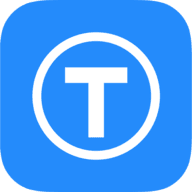Software:Thingiverse
 | |
Type of site | Database |
|---|---|
| Available in | English |
| Owner | Ultimaker |
| Created by | Zach "Hoeken" Smith, Bre Pettis |
| Revenue | Advertisement |
| Website | www.thingiverse.com |
| Registration | Optional |
| Launched | October 18, 2008 |
| Current status | Active |
Thingiverse is a website dedicated to the sharing of user-created digital design files. Providing primarily free, open-source hardware designs licensed under the GNU General Public License or Creative Commons licenses, the site allows contributors to select a user license type for the designs that they share. 3D printers, laser cutters, milling machines and many other technologies can be used to physically create the files shared by the users on Thingiverse.
Thingiverse is widely used in the DIY technology and Maker communities, by the RepRap Project and by 3D printer and MakerBot operators. Numerous technical projects use Thingiverse as a repository for shared innovation and dissemination of source materials to the public. Many of the object files are intended for the purposes of repair, decoration or organization.[1] Thingiverse houses more than a million open source hardware designs, that allow prosumers to save money by manufacturing their own products rather than purchase them commercially.[2]
History
Thingiverse was started in November 2008[3] by Zach Smith as a companion site to MakerBot Industries, a DIY 3D printer kit making company. In 2013, Makerbot and Thingiverse were acquired by Stratasys. The open source value creation of Thingiverse was a major component in the value of Makerbot.[4]
Thingiverse received an Honorable Mention in the Digital Communities category of the 2010 ARS Electronica, Prix Ars Electronica international competition for cyber-arts.[5]
As of November 2012, 25,000 designs had been uploaded to Thingiverse;[6] by June 2013, the total exceeded 100,000.[7] The 400,000th Thing was published on July 19, 2014.[8] Many of the designs on Thingiverse are meant for the greater good - e.g. assistive technologies.[9][10]
Administration
The site is owned by Ultimaker and was originally owned by MakerBot Industries and run by one of its founders, Bre Pettis, in Brooklyn, New York.
In its terms of use, Thingiverse stipulates that users must not include content that "contributes to the creation of weapons, illegal materials, or is otherwise objectionable." In 2012, Thingiverse removed an uploaded design for an entirely 3D-printed gun. In response, the gun's designers launched the site DEFCAD, designed to host Thingiverse's "censored" files.[11]
Open-source hardware
Whereas many open-source hardware projects focus on project-specific materials, Thingiverse provides a common ground from which derivatives[12] and mashups[13] can form. These derivatives typically involve users modifying or improving existing designs and uploading them back to the site. Because all models on the site are open source, this behavior is actively encouraged by the site and community. Thingiverse is one of the first websites[14] to allow customization of parametric designs made with OpenSCAD. OpenSCAD is a free and open source software that uses scripting to design 3D objects.[15]
Many 3D printers can be upgraded with 3D-printed parts. Thingiverse users produce many improvements and modifications for a variety of platforms. Popular examples of community-based 3D printer projects include the RepRap project and the Contraptor project. Some 3D printers can be almost entirely 3D-printed themselves.[16] [17]
See also
References
- ↑ "Make and Mend: Thingiverse fixit roundup, Makezine.com by John Baichtal, 16 August 2010". Blog.makezine.com. 2010-08-16. Archived from the original on 20 August 2010. https://web.archive.org/web/20100820022400/http://blog.makezine.com/archive/2010/08/make_and_mend_thingiverse_fixit_rou.html. Retrieved 2011-09-16.
- ↑ Wittbrodt, B. T.; Glover, A. G.; Laureto, J.; Anzalone, G. C.; Oppliger, D.; Irwin, J. L.; Pearce, J. M. (2013-09-01). "Life-cycle economic analysis of distributed manufacturing with open-source 3-D printers" (in en). Mechatronics 23 (6): 713–726. doi:10.1016/j.mechatronics.2013.06.002. ISSN 0957-4158. https://www.sciencedirect.com/science/article/pii/S0957415813001153.
- ↑ Previous post Next post (2008-11-20). "Thingiverse.com Launches A Library of Printable Objects, Wired; GeekDad by John Baichtal, November 20, 2008". Wired.com. https://www.wired.com/geekdad/2008/11/thingiversecom/. Retrieved 2011-09-16.
- ↑ West, Joel; Kuk, George (2016-01-01). "The complementarity of openness: How MakerBot leveraged Thingiverse in 3D printing" (in en). Technological Forecasting and Social Change 102: 169–181. doi:10.1016/j.techfore.2015.07.025. ISSN 0040-1625. https://www.sciencedirect.com/science/article/pii/S0040162515002449.
- ↑ Austria. "2010 ARS Electronica | Prix Ars Electronica | Digital Communities | ANERKENNUNGEN". New.aec.at. http://new.aec.at/prix/de/gewinner/2010/#digital-communities. Retrieved 2011-09-16.
- ↑ Andrew. "Introducing MakerBot Thingiverse Dashboard And Follow Features". Makerbot blog. http://www.makerbot.com/blog/2012/11/07/introducing-makerbot-thingiverse-dashboard-and-follow-features/.
- ↑ JHoward (23 May 2013). "The 100,000th Thing on Thingiverse!". Makerbot blog. http://www.makerbot.com/blog/2013/06/08/100000th-thing-on-thingiverse/.
- ↑ 400 000th thing on Thingiverse
- ↑ Simpson, A. Chloe; Taliaferro, Andrea Ruth (September 2021). "Designing Inclusion: Using 3D Printing to Maximize Adapted Physical Education Participation" (in en). TEACHING Exceptional Children 54 (1): 26–35. doi:10.1177/00400599211010191. ISSN 0040-0599. http://journals.sagepub.com/doi/10.1177/00400599211010191.
- ↑ Buehler, Erin; Branham, Stacy; Ali, Abdullah; Chang, Jeremy J.; Hofmann, Megan Kelly; Hurst, Amy; Kane, Shaun K. (2015-04-18). "Sharing is Caring: Assistive Technology Designs on Thingiverse". Proceedings of the 33rd Annual ACM Conference on Human Factors in Computing Systems. CHI '15 (New York, NY, USA: Association for Computing Machinery): 525–534. doi:10.1145/2702123.2702525. ISBN 978-1-4503-3145-6. https://doi.org/10.1145/2702123.2702525.
- ↑ "Daily Dot". 24 December 2012. http://www.dailydot.com/society/thingiverse-pulls-weapons-guns-3d-printing/.
- ↑ "Prusa simplified mendel by prusajr". Thingiverse.com. 2010-09-18. https://www.thingiverse.com/thing:4148. Retrieved 2011-09-16.
- ↑ "Duplo Brick to Brio Track adapter with snap-lock by Zydac". Thingiverse.com. https://www.thingiverse.com/thing:4041. Retrieved 2011-09-16.
- ↑ Nilsiam, Yuenyong; Pearce, Joshua M. (2017). "Free and Open Source 3-D Model Customizer for Websites to Democratize Design with OpenSCAD" (in en). Designs 1 (1): 5. doi:10.3390/designs1010005. ISSN 2411-9660.
- ↑ "OpenSCAD" (in en). https://openscad.org/.
- ↑ "Snappy: Most 3D Printable 3D printer yet". 3dprintingindustry.com. 21 September 2015. https://3dprintingindustry.com/news/reprap-snappy-is-the-most-3d-printable-3d-printer-yet-57957/. Retrieved 2018-02-28.
- ↑ "3D printing businesses". pick3dprinter.com. 24 July 2019. https://pick3dprinter.com/start-3d-printing-business/. Retrieved 2021-02-02.
External links

